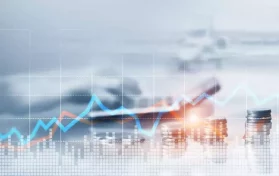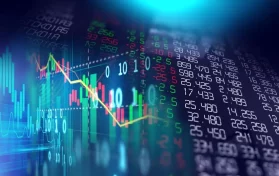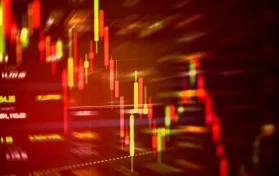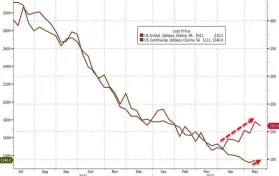
Last week, the Bureau of Economic Analysis released a second estimate of gross domestic product in the first quarter of this year, and the numbers reveal that the initial estimates were slightly incorrect. GDP contracted by 1.5 percent rather than the initial 1.4 percent first announced. Furthermore, the BEA reported that the economic contracted more quickly than expected.
Economic experts differ in their opinion as to whether or not America – and the world in general – will see a recession in 2022. Some say that it could happen in 2023, but most agree that a recession is highly likely to occur. Much of the possibility depends upon the GDP reports from the second quarter of the year. (A recession is defined as two consecutive quarters with a reduction in GDP.)
The Bureau of Economic Analysis reported that the updated GDP numbers was “partially offset by an upward revision in consumer spending” but also by revamped numbers where residential investment and private inventory investment were concerned.
According to the BEA, the American economy is still feeling the effects of the COVID-19 pandemic. The agency stated that the upshot of cases due to the Omicron variant took an effect on Quarter one data, particularly due to restrictions as well as disturbances to the way establishments operated due to said restrictions.
Additionally, COVID-19 relief funds from the government to various agencies are beginning to dwindle. The BEA said this is due to the funds being tapered off or the programs expiring.
For consumers, inflation continues to wallop the pocketbooks of Americans. Prices are steadily increasing, and the consumer price index shot up by eight percent in the first quarter of 2022. For comparison, CPI rose by seven percent in the fourth quarter of 2021. The BEA also measured personal consumption expenditures price index (another key factor in measuring the effects of inflation). This number rose by seven percent in Q1; in Q4 of 2021, this rose by only 6.4 percent.
Recession is the key word that most economists are discussing in some form or fashion, yet the experts tend to disagree on the possibility of such an event, at least for this year. GDP was strong in Q4 2021, but it contracted in Q1 2022. Therefore, it will need to decrease once more in Q2 in order for a recession to take place. Wells Fargo said that the decrease in Q1 has sparked discussions of recession, particularly since the GDP dropped so far between Q4 and Q1 of the new year.
Wells Fargo believes that GDP will grow to 2.4 percent during 2022, but then slow to 2 percent by the end of the year. However, Goldman Sachs’ experts believe that historical patterns point to the likelihood of a recession. They point out the “overheated labor market” as one indicator of recession, and they predict a fifteen percent chance of recession in 2022 as well as a 35 percent chance that will take place in 2023.
Bank of America tends to side with Goldman Sachs. They have noted the “risks of a recession are rising,” and said that they are operating with this in mind. However, BofA refers to their operational procedure as “slower-than-expected real GDP growth.”
The Federal Reserve has already hiked the interest rate by a quarter-point and a half-point in 2022, and experts believe they are still on track to carry out further interest rate hikes in an effort to slowdown the economy. Experts believe they will carry these hikes through 2023 as planned. Minutes released last week from the latest Federal Reserve meeting show that the entity plans to move ahead with multiple “fifty basis-point increases” in the federal interest rate.
The last rate hike by the Fed was the highest in twenty years.
The Federal Reserve head, Jerome Powell, has said in the past that the Fed is looking to slowdown the economy with a “soft landing.”





